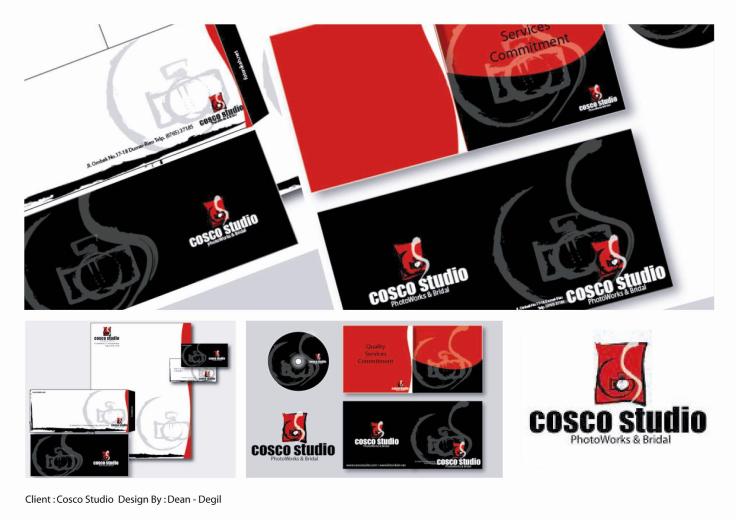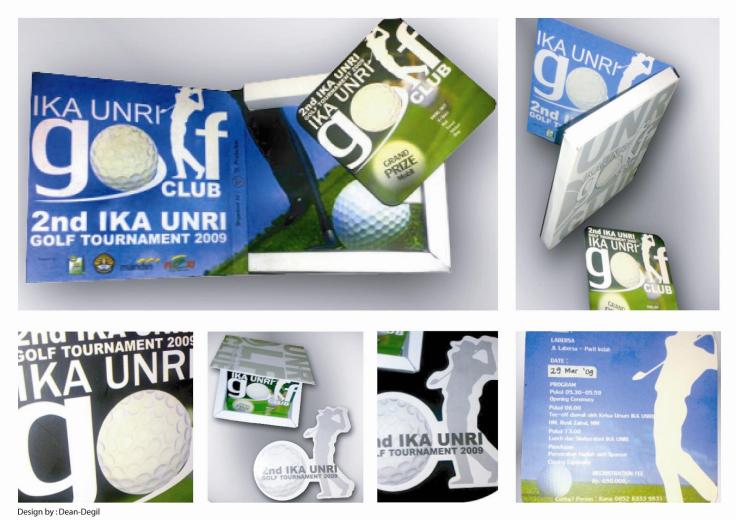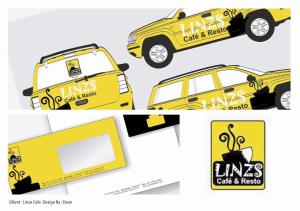Brands were originally developed as labels of ownership: name, term, design, symbol. However, today it is what they do for people that matters much more, how they reflect and engage them, how they define their aspiration and enable them to do more. Powerful brands can drive success in competitive and financial markets, and indeed become the organization’s most valuable assets.
Etymology
Brand, along with many modern-language lexemes such as English burn and brandy, German brennen, and those in many European languages based on the root therm-, are all ultimately related to the ideas of warmth, heat, burning, etc., and descend from an Indo-European root that has been reconstructed as /gwher/.[1]
In the Old English language, the noun brond is first attested from the epic poem Beowulf (circa 1000) meaning “destruction by fire.”[2][3]
Throughout the ages, brand had been used in figurative and transferred senses to mean “a person delivered from imminent danger,” “the torches of Cupid and the Furies,” and “Jove’s or God’s or Phoebus’ brand.”[4]
Brand had also been figuratively applied since the late 16th century to criminalize people (as in disgrace, a stigma, or mark of infamy) and in the sense of firebrand since the 17th century.[5]
The idea of marking things, people, or animals by burning identifying marks onto them is clearly an ancient one.
While described as a physical impression of ownership on livestock by way of hot-iron branding since the mid-17th century, modern senses of brand as used in business began to arise in the early 19th century when the term was figuratively extended to trademarks and logos. During this time, brands were imprinted on casks of wine, timber, and other goods except textile fabrics.[6]
During the 19th century in primarily the United States, hot irons used for marking livestock and cauterizing wounds were called brands, and later cattle and other livestock were also referred to as brands. A brand blotter was a thief who stole, and removed marks of ownership from, cattle.[7]
History
In the field of marketing, brands originated in the nineteenth century with the advent of packaged goods. According to Unilever records, Pears Soap was the world’s first registered commercial brand. Industrialization moved the production of household items, such as soap, from local communities to centralized factories. When shipping their items, the factories would brand their logotype insignia on the shipping barrels. These factories, generating mass-produced goods, needed to sell their products to a wider range of customers, to a customer base familiar only with local goods, and it turned out that a generic package of soap had difficulty competing with familiar, local products.
The fortunes of many of that era’s brands, such as Uncle Ben’s rice and Kellogg’s breakfast cereal, illustrate the problem. The packaged goods manufacturers needed to convince buyers that they could trust in the non-local, factory product. Campbell soup, Coca-Cola, Juicy Fruit gum, Aunt Jemima, and Quaker Oats, were the first American products to be branded to increase the customer’s familiarity with the products.
Around 1900, James Walter Thompson published a house advert explaining trademark advertising, in an early commercial description of what now is known as ‘branding’. Soon, companies adopted slogans, mascots, and jingles that were heard on radio and seen in early television. By the 1940s, Mildred Pierce manufacturers recognized how customers were developing relationships with their brands in the social, psychological, and anthropological senses. From that, manufacturers quickly learned to associate other kinds of brand values, such as youthfulness, fun, and luxury, with their products. Thus began the practice of ‘branding’, wherein the customer buys the brand rather than the product. This trend arose in the 1980s ‘brand equity mania’.[8] In 1988, Phillip Morris bought Kraft for six times its paper worth. It is believed the purchase was made because the Phillip Morris company actually wanted the Kraft brand rather than the company and its products.
April 2, 1993, labeled Marlboro Friday, is described by Klein (2000) as the death day of the brand.[8] On that day, Phillip Morris declared a 20 per cent price cut of Marlboro cigarettes in order to compete with cheaper price cigarettes. At the time, Marlboro cigarettes were notorious for their heavy advertising campaigns, and nuanced brand image. On that day, the prices of many branded companies Wall street stocks fell: [8] Heinz, Coca Cola, Quaker Oats, PepsiCo; seemingly the signal of the beginning ‘brand blindness'(Klein 13).
Concepts
Marketers engaged in branding seek to develop or align the expectations behind the brand experience, creating the impression that a brand associated with a product or service has certain qualities or characteristics that make it special or unique. A brand image may be developed by attributing a “personality” to or associating an “image” with a product or service, whereby the personality or image is “branded” into the consciousness of consumers. A brand is therefore one of the most valuable elements in an advertising theme. The art of creating and maintaining a brand is called brand management.
A brand which is widely known in the marketplace acquires brand recognition. When brand recognition builds up to a point where a brand enjoys a critical mass of positive sentiment in the marketplace, it is said to have achieved brand franchise. One goal in brand recognition is the identification of a brand without the name of the company present. For example, Disney has been successful at branding with their particular script font (originally created for Walt Disney’s “signature” logo), which it used in the logo for go.com.
“DNA” refers to the unique attributes, essence, purpose, or profile of a brand and, therefore, a company. The term is borrowed from the biological DNA, the molecular “blueprint” or genetic profile of an organism which determines its unique characteristics.
The act of associating a product or service with a brand has become part of pop culture. Most products have some kind of brand identity, from common table salt to designer clothes. In non-commercial contexts, the marketing of entities which supply ideas or promises rather than product and services (e.g. political parties or religious organizations) may also be known as “branding”.
Brand equity
Brand equity measures the total value of the brand to the brand owner, and reflects the extent of brand franchise. The term brand name is often used interchangeably with “brand”, although it is more correctly used to specifically denote written or spoken linguistic elements of a brand. In this context a “brand name” constitutes a type of trademark, if the brand name exclusively identifies the brand owner as the commercial source of products or services. A brand owner may seek to protect proprietary rights in relation to a brand name through trademark registration.
Attitude branding
Attitude branding is the choice to represent a feeling, which is not necessarily connected with the product or consumption of the product at all. Marketing labeled as attitude branding includes that of Apple, Nike, Safeway, Starbucks, and The Body Shop.[8]
Brand monopoly
In economic terms the “brand” is a device to create a monopoly—or at least some form of “imperfect competition”—so that the brand owner can obtain some of the benefits which accrue to a monopoly, particularly those related to decreased price competition. For example, the Coca Cola corporation will probably never have a monopoly on cola-flavored soda pop, but it can have a monopoly on its own brand ofcola-flavored soda pop. In this context, most “branding” is established by promotional means. There is also a legal dimension, for it is essential that the brand names and trademarks are protected by all means available. The monopoly may also be extended, or even created, by patent, copyright, trade secret (e.g. secret recipe), and other sui generis intellectual property regimes (e.g.: Plant Varieties Act, Design Act).
In all these contexts, retailers’ “own label” brands can be just as powerful. The “brand”, whatever its derivation, is a very important investment for any organization. RHM(Rank Hovis McDougall), for example, have valued their international brands at anything up to twenty times their annual earnings. Often, especially in the industrial sector, it is just the company’s name which is promoted (leading to one of the most powerful statements of “branding”; the saying, before the company’s downgrading, “No-one ever got fired for buying IBM”).
Brand extension
Main article: brand extension
An existing strong brand name can be used as a vehicle for new or modified products; for example, many fashion and designer companies extended brands into fragrances, shoes and accessories, home textile, home decor, luggage, (sun-) glasses, furniture, hotels, etc. Mars extended its brand to ice cream, Caterpillar to shoes and watches, Michelin to a restaurant guide, Adidas and Puma to personal hygiene.
There is a difference between brand extension and line extension. When Coca-Cola launched “Diet Coke” and “Cherry Coke” they stayed within the originating product category: non-alcoholic carbonated beverages. Procter & Gamble (P&G) did likewise extending its strong lines (such as Fairy Soap) into neighboring products (Fairy Liquid and Fairy Automatic) within the same category, dish washing detergents. These are examples of line, not brand extensions.
Multiple brands
In a market fragmented with many brands, a supplier can choose to launch new brands apparently competing with its own, extant strong brand (and often with an identical product), simply to obtain a greater share of the market that would go to minor brands. The rationale is that having 3 out of 12 brands in such a market will give garner a greater, overall share than having 1 out of 10 (even if much of the share of these new brands is taken from the existing one). In its most extreme manifestation, a supplier pioneering a new market which it believes will be particularly attractive may choose immediately to launch a second brand in competition with its first, in order to pre-empt others entering the market.
Individual brand names naturally allow greater flexibility by permitting a variety of different products, of differing quality, to be sold without confusing the consumer’s perception of what business the company is in or diluting higher quality products.
Once again, Procter & Gamble is a leading exponent of this philosophy, running as many as ten detergent brands in the US market. This also increases the total number of “facings” it receives on supermarket shelves. Sara Lee, on the other hand, uses it to keep the very different parts of the business separate—from Sara Lee cakes through Kiwi polishes to L’Eggs pantyhose. In the hotel business, Marriottuses the name Fairfield Inns for its budget chain (and Ramadauses Rodeway for its own cheaper hotels).
Cannibalizationis a particular problem of a “multi-brand” approach, in which the new brand takes business away from an established one which the organization also owns. This may be acceptable (indeed to be expected) if there is a net gain overall. Alternatively, it may be the price the organization is willing to pay for shifting its position in the market; the new product being one stage in this process.
Abercrombie & Fitchis a multi-brands company, rolling out Lifestyle Brands and the phony competitor Hollister Co.
Generic and private-label brands
With the emergence of strong retailers, the “own brand”, the retailer’s own branded product (or service), emerged as a major factor in the marketplace. Where the retailer has a particularly strong identity, such as, in the UK, Marks & Spencer in clothing, this “own brand” may be able to compete against even the strongest brand leaders, and may dominate those markets which are not otherwise strongly branded. There was a fear that such “own brands” might displace all other brands (as they have done in Marks & Spencer outlets), but the evidence is that—at least in supermarkets and department stores—consumers generally expect to see on display something over 50 per cent (and preferably over 60 per cent) of brands other than those of the retailer. Indeed, even the strongest own brands in the United Kingdom rarely achieve better than third place in the overall market. In the US, Target has “own” brands of “Market Pantry” and “Archer Farms” each with unique packaging and placement.
The strength of the retailers has, perhaps, been seen more in the pressure they have been able to exert on the owners of even the strongest brands (and in particular on the owners of the weaker third and fourth brands). Relationship marketing has been applied most often to meet the wishes of such large customers (and indeed has been demanded by them as recognition of their buying power). Some of the more active marketers have now also switched to ‘category marketing’—in which they take into account all the needs of a retailer in a product category rather than more narrowly focusing on their own brand.
At the same time, generic (that is, effectively unbranded goods) have also emerged. These made a positive virtue of saving the cost of almost all marketing activities; emphasizing the lack of advertising and, especially, the plain packaging (which was, however, often simply a vehicle for a different kind of image). It would appear that the penetration of such generic products peaked in the early 1980s, and most consumers still seem to be looking for the qualities that the conventional brand provides.
Aspirational brand
In consumer marketing, an aspirational brand (or product) is one that a large segment of its exposure audience wishes to own, but for economical reasons cannot. An aspirational product implies certain positive characteristics to the user, but the supply appears limited due to limited production quantities.
An important characteristic of an aspirational product is that the part of its exposure audience that is at present economically unable to purchase it, thinks of itself as having a fair probability of at a certain point in the future being able to do so. This part of the exposure audience is referred to as the aspirational audience, whereas the part of the exposure audience that already can afford the product is called the consumption audience. Consumption audience and aspirational audience together form the aspirational product’s target audience, which typically represents 30%-60% of the exposure audience
Weak aspirational brands have target audiences that are almost as large as their exposure audiences (e.g. mp3 player brands), and are therefore slowly becoming commodity brands, e.g. brands with consumption audiences that coincide with the exposure audience (and therefore, brands without an aspiring audience).
As a general rule, an aspirational brand and its products can command a price premium in the marketplace over a commodity brand. This ability can to a large extent be explained by the consumer’s need for invidious consumption for which he is willing to pay a premium. The smaller the size of the product’s target audience compared to the exposure audience, the more the product satisfies this need, and the higher the premium that such a consumer is prepared to pay.
Individual branding
Individual branding, also called multibranding, is the marketing strategy of giving each product in a product portfolio its own unique brand name. This is contrasted with family branding in which the products in a product line are given the same brand name. The advantage of individual branding is that each product has a self image and identity that’s unique. This facilitates the positioning process. That means that there are less Halo-effects and one can position all products differently without making trade-offs. Companies such as Coca-Cola Co. have adopted this approach for instance, Coca-Cola and Bacardi Mixers both which have their own unique brand name but are owned and marketed by Coca-Cola Co.
Additionally the term individual branding is used for keeping the brands of a company unchanged after a merger and acquisition.
see also marketing, brand, advertising, target market, brand management
Personal branding
From Wikipedia, the free encyclopedia
Jump to: navigation, search
Personal branding is the process whereby people and their careers are marketed as brands.[1] It has been noted that while previous self-help management techniques were about self-improvement, the personal branding concept suggests instead that success comes from self-packaging.[2] The term is thought to have been first used and discussed in an 1997 article by Tom Peters.[3]
Brand loyalty has been proclaimed by some to be the ultimate goal of marketing.[1] In marketing, brand loyalty consists of a consumer’s commitment to repurchase the brand and can be demonstrated by repeated buying of a product or service or other positive behaviors such as word of mouth advocacy.[2] True brand loyalty implies that the consumer is willing, at least on occasion, to put aside their own desires in the interest of the brand.[3]
Brand loyalty is more than simple repurchasing, however. Customers may repurchase a brand due to situational constraints, a lack of viable alternatives, or out of convenience.[4] Such loyalty is referred to as “spurious loyalty”. True brand loyalty exists when customers have a high relative attitude toward the brand which is then exhibited through repurchase behavior.[2] This type of loyalty can be a great asset to the firm: customers are willing to pay higher prices, they may cost less to serve, and can bring new customers to the firm.[1][5] For example, if Joe has brand loyalty to Company A he will purchase Company A’s products even if Company B’s are cheaper and/or of a higher quality.
An example of a major brand loyalty program that extended for several years and spread worldwide is Pepsi Stuff. Perhaps the most significant contemporary example of brand loyalty is the fervent devotion of many Mac users to the Apple company and its products.





 Client : IKA UNRI
Client : IKA UNRI
